User
Interface |
| Validation of
transformed instances |
During the
transformation, all new instances are validated against the
constraints that come with the target schema. The results are
presented in the validation report, highlighting any problems with
missing or invalid property values, grouped by the property where
they occur. Problematic instances can be inspected in the data
view.
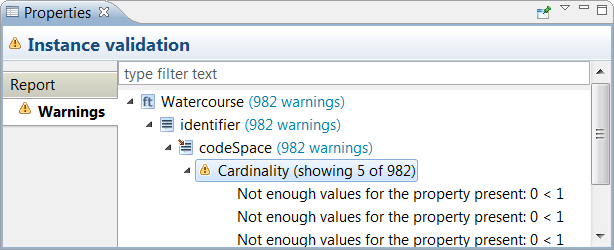
For more information, see Validate
the transformed data.
|
| Instance validation
in data views |
Validation
information is also available in the data views. When using the Compare
mode, a validation summary is displayed as tooltip. In the Explore
mode, validation warnings are shown for the affected properties.
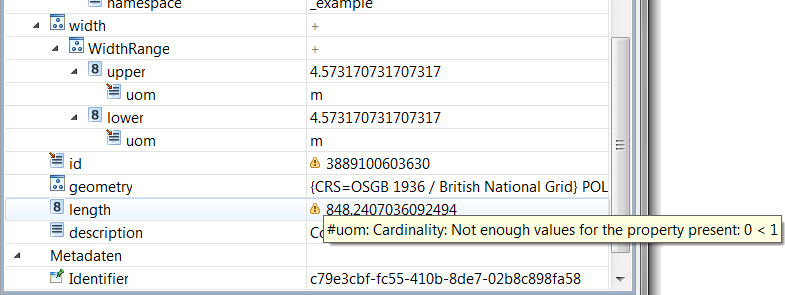
|
| Instance population |
If you have loaded
a source data set, information about how the schema elements are
populated in the data are displayed. The population states the
overall count of instances of the respective type or values of the
respective property. In the Schema Explorer you can filter
unpopulated properties to only focus on those where values are
present.
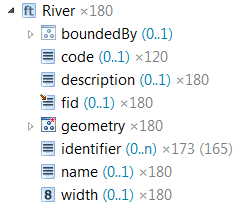
For more information, see the Schema
elements reference.
|
| Load pre-defined
schemas |
HALE now offers a
selection of pre-defined schemas you can load. When importing a
source or target schema just select From preset and then
click on the selection field to show the list of pre-defined
schemas. The tag Bundled marks a schema that is bundled
with HALE and can be loaded without internet connection.
Currently the presets include CityGML schemas from
citygml.org and the INSPIRE Annex I GML Application Schemas from
the INSPIRE schema repository.
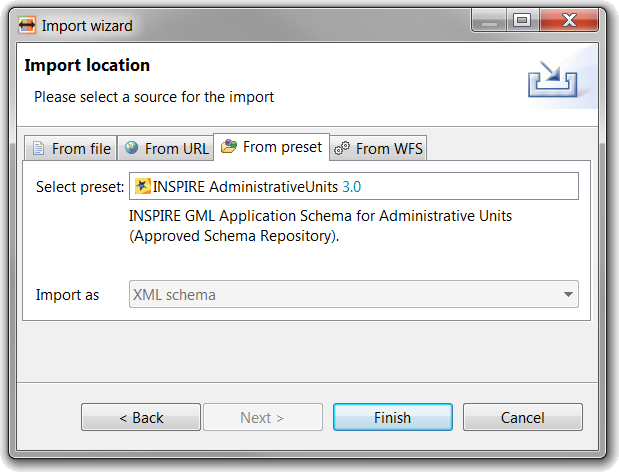
|
| Compare only
populated properties |
In the data views
there is a new variant of the Compare mode, which only
displays properties populated in the loaded source data set or the
live transformation result - this makes it easier to compare
instances, especially with very complex schemas.

|
| Transform external
data |
Up to now you had
to load your data into HALE to execute a transformation and export
it - but using source data to support in the mapping creation with
HALE is best done with a manageable example. In the new Transformation
menu you have the possibility to launch a dedicated transformation
job based on the current alignment and schemas, to transform bigger
data sets.

For more information, see Transform
external data.
|
| Show cells associated
to a schema element |
If you want to see
or edit the mapping cells associated with a specific schema element
you can use the new Mapping View. It displays the cells
associated to the schema element selected in the Schema
Explorer. Like in the Alignment
View, you can use the context menu to edit or delete a mapping
cell.
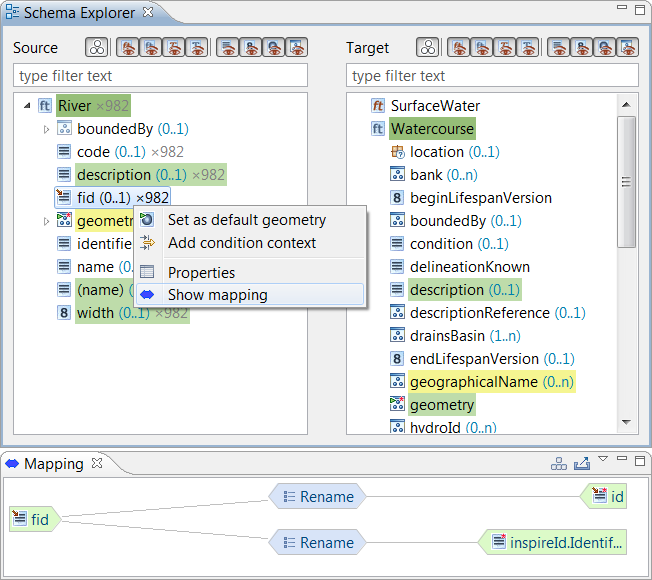
|
| Replace a mapping
cell |
Replacing a mapping
cell up to now was a two-step task - deleting the old relation and
then creating a new one. This can be tedious if you are working
with a source data set and the transformation is run in between.
Now for property relations you have the possibility to do it in one
step. For replacement, every property function is offered, not
restricted to those applicable to the properties involved in the
relation you want to delete.

|
| Select specific
values in Compare mode in data views |
When using the Compare
mode in a data view, you now can select a specific value for a
property if there are multiple. So if a value is annotated with
something like (1 of 7) you can hover over the corresponding
table cell and select a different value (e.g. the second, third,
etc.) from the combo box that appears.

|
| Generate sequential
identifiers |
A new function has
been added that allows generating sequential identifiers. You can
specify a prefix and suffix as desired or needed to create a valid
value for the target property.

|
| Specify missing SRS
information |
If the spatial
reference system can't be determined for a geometry when loading a
Shapefile or GML file, HALE now asks you to specify the SRS to use,
either through an EPSG code or a WKT string.
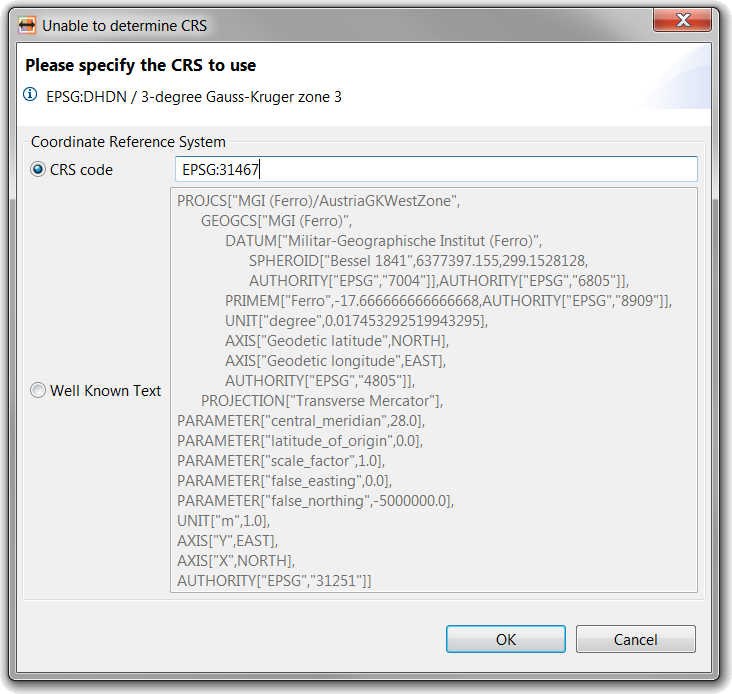
|
Under
the Hood |
| Java bundled with
HALE on Windows and Linux |
No need to install
Java yourself - HALE includes its own version of Java it runs with.
If you want to use your local version of Java, just delete the jre
folder in the HALE directory.

|
| GZiped XML |
HALE now supports
directly reading, writing and validating gzip compressed XML
or GML files.
|
| Improved Shapefile
data import |
When loading data
from a Shapefile, the contained features are streamed instead of
loaded completely into memory. This allows loading big Shapefiles
or using them in the external data transformation. |
| Improved internal
database storage |
The space the
internal database uses has been drastically reduced. The internal
database serves for temporarily storing source and transformed
instances. |
| Load HALE 2.1
projects |
Projects created in
HALE up to version 2.1.x can now be imported again, though with
some limitations:
- Previously defined filters are not applied
- The NilReasonFunction is converted to an assignment
- The BoundingBoxFunction is not supported
- The ClipByRectangleFunction is not supported
- Problems can arise if multiple properties with the same
local name but different namespace exist in a type and were
mapped.
Please take a look at the reports after importing such a project,
to identify if and where there might be problems.
|











